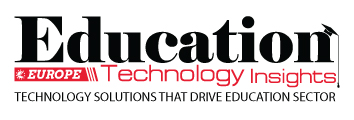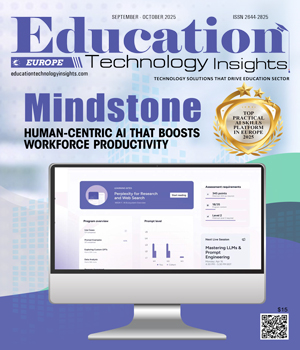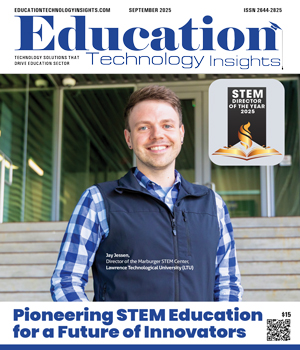THANK YOU FOR SUBSCRIBING
Be first to read the latest tech news, Industry Leader's Insights, and CIO interviews of medium and large enterprises exclusively from Education Technology Insights
Redefining Education Through XR And AI
Rob Theriault, Immersive Technology Manager, Georgian College
 Rob Theriault, Immersive Technology Manager, Georgian College
Rob Theriault, Immersive Technology Manager, Georgian CollegeRob Theriault is an educational technology visionary and global leader specializing in the intersection of XR and AI. He has been instrumental in pioneering virtual reality applications in a wide range of disciplines including engineering interior design, paramedicine, fine arts and Indigenous languages. Theriault holds a Master of Educational Technology from the University of British Columbia and is widely recognized for his innovative, experiential approach to education.
Entering into Virtual Reality
I come from an allied health background, with 35 years of experience as a paramedic and 40 years as an educator. Georgian College’s senior leadership offered me a role to help faculty across its seven campuses to explore and integrate virtual, mixed and augmented reality and generative artificial intelligence into curricula. So, I transitioned into that role in 2020, and since then — with the rise of generative artificial intelligence — I have continued to focus on the intersection of AI and XR.
As my role assumes greater responsibilities, I frequently encounter challenges that shape modern technology in education. Widespread adoption is one of the greatest challenges, often starting with a few early adopters and innovators. Still, many tools never move beyond that stage to gain real traction among educators.
Take synchronous online learning, for example. As a learner who completed both undergraduate and master’s degrees online, I found the experience to be isolating, despite its flexibility. That led me to a personal decision early on: if I was going to teach online, I wanted to create real-time interaction — not just between me and my students, but among the students themselves.
A Paradigm Shift in Online Learning
Following my years of commitment, I began incorporating synchronous platforms into my teaching in 2005. Yet even by 2019, only a handful of us across the seven campuses were using it consistently. It seemed unlikely that online learning would ever catch on in a meaningful way. Then the pandemic hit in 2020. Virtually overnight, synchronous online instruction became the global standard. Every institution was suddenly doing what had once seemed improbable. In this case, a global crisis was needed to push the technology across the critical threshold into mainstream adoption.
In contrast, podcasting, which is essentially recording classes, has proven to be a powerful educational tool. Although simple and effective, only about 2 percent of faculty members in the college record their lectures this way. Podcasting has yet to gain widespread adoption and may remain underutilized without a catalyst to drive broader acceptance.
The intersection of XR and AI
XR and generative AI are fundamentally different, but they can create immersive learning environments that enable students to engage cognitively and emotionally. It’s the only educational technology medium I know that offers presence, agency and context simultaneously.
“With XR and AI merging, I see education evolving beyond lectures into engaging, hands-on learning that fosters critical thinking, empathy and real-world skills”
At Georgian College, we are exploring powerful use cases, including virtual anatomy lessons that offer details plastic models cannot, and simulated patient encounters where students interact with AI-driven avatars. These simulations let learners practice assessments, make clinical decisions and receive detailed feedback based on data, like whether they chose the correct drug at the right time in the proper dosage.
The benefit is twofold: students gain deep, hands-on experience and faculty can shift focus to developing students’ soft skills — like empathy, communication and de-escalation — instead of spending time on procedural tasks. We're still early in the journey, but I believe XR and AI are on track to transform how students learn alongside how we measure learning and manage faculty workloads.
So far, we’ve integrated XR into about 15 programs and are exploring with 20 more. One of our earliest successes was in Indigenous language instruction. Instead of memorizing vocabulary in a classroom, students now practice the language in a virtual home, backyard or kitchen, engaging with the context where the language naturally belongs. It’s like a field trip every class — and it’s working.
Evolving Reality: Beyond the Classroom
With XR and AI merging, I see education evolving beyond lectures into engaging, hands-on learning that fosters critical thinking, empathy and real-world skills.
Our anatomy students use VR to study muscles, joints and movement with precision not possible in physical labs. And in tourism, we expose students to new XR experiences, like navigating a 3D model of New York City, to prepare them for an industry that’s quickly evolving.
Most students in architecture and interior design now graduate with the 3D design skills employers require. This enables them to show clients virtual walk-throughs of home renovations using immersive models that are far more impactful than static blueprints.
Insights Gained, Lessons Shared
I always say: start with small steps — the big ones will follow. Whether it’s podcasting, synchronous online learning, XR or AI, students need to engage with these technologies firsthand to understand their strengths and limitations.
The fast pace of technological change often leaves colleges struggling to adapt. To truly empower students to access their own AI tutors, educators should begin evaluating intelligent tutoring systems and offering guidance on their use.
Because XR and AI are no longer just buzzwords, they're actively reshaping what's possible in education. My hope is that these tools continue to gain traction so we can spend less time on rote content delivery and more time nurturing well-rounded, thoughtful graduates.
Read Also
Empowering Educators through Purposeful, Connected and Transformative Learning
Empowering Students to Lead: A New Vision for Civic Learning
The Director's Playbook: Strategic Digital Transformation in Rual Hyper-Growth Districts
The Art and Architecture of Student Support
From At-Risk to At-Promise: The Language Revolution Higher Education Needs
Teaching Tomorrow: How Western Governors University Is Redefining Teacher Preparation

I agree We use cookies on this website to enhance your user experience. By clicking any link on this page you are giving your consent for us to set cookies. More info

However, if you would like to share the information in this article, you may use the link below:
www.educationtechnologyinsightseurope.com/cxoinsights/-rob-theriault-nid-3298.html





















